How to Grow and Care for Cymbidium Orchid (Boat Orchids)
Written by Ivy
Feb 07 2023
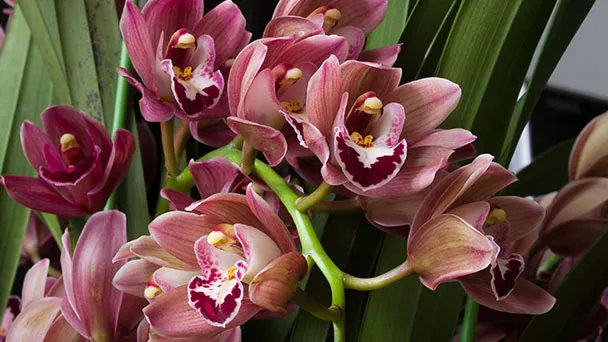
The leaves of Cymbidium orchid (Boat Orchids) are banded, forming different shapes such as upright, slope, bending and drooping. Cymbidium orchid is generally dark green, rarely light green, with rough leaf surface. Most Cymbidium orchid have 6-8 leaves, and a few have 3-4 leaves, up to 12 in most cases. How to grow and care for Cymbidium Orchid? This Guide can help you know more about taking care of Cymbidium Orchid.
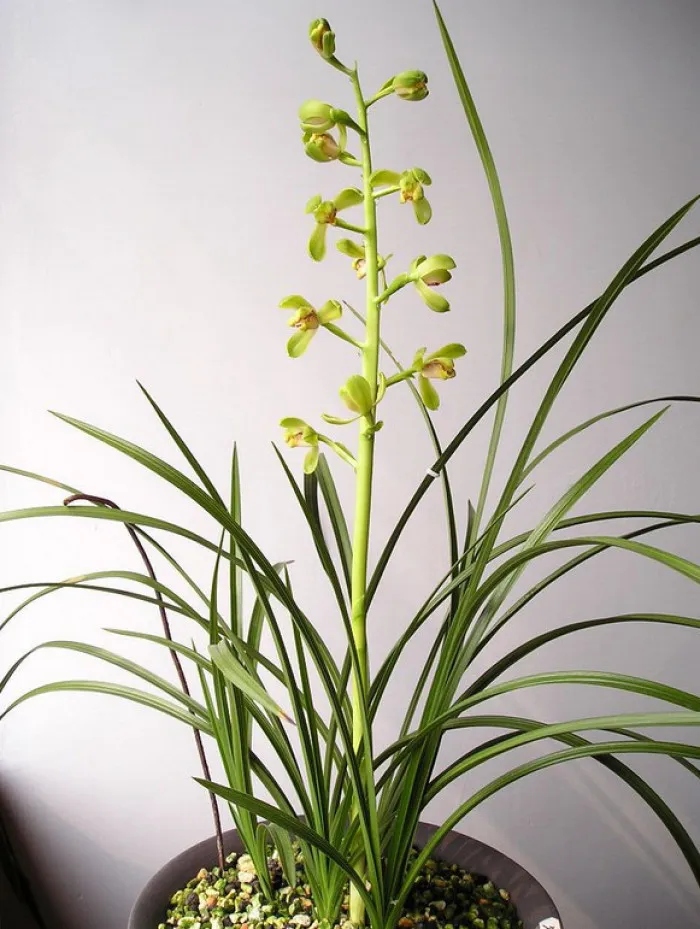 Cymbidium orchid seedlings come with flower buds during overwintering. Once the temperature in spring stimulates, not only the flower buds begin to grow and recover, but also the leaf buds begin to sprout synchronously. Therefore, during this period, Cymbidium orchid seedlings are about to enter the peak consumption period.
Cymbidium orchid seedlings come with flower buds during overwintering. Once the temperature in spring stimulates, not only the flower buds begin to grow and recover, but also the leaf buds begin to sprout synchronously. Therefore, during this period, Cymbidium orchid seedlings are about to enter the peak consumption period.
At least after a winter of nutrient storage, Cymbidium orchid still has enough nutrients to support its service basin, as long as the planting environment is reasonable and the planting material is prepared correctly. Well, the survival rate of Cymbidium orchid planted in spring is not low, but it will certainly have varying degrees of impact in the pot period. This is because the cymbidium orchid root can not absorb nutrients from the soil in time at the beginning of planting, resulting in excessive consumption of stored nutrients of the orchid plant. This will directly affect the situation of new buds in that year. It is common that the sprouting time of new buds is delayed, and the seedling of new buds in that year is not strong enough. These are caused by large nutrient consumption during pot service period. Therefore, planting Cymbidium orchid in spring is not the best season. This is the difference between Cymbidium orchid and other plants.
But autumn is different. The natural law of Cymbidium orchid is to slowly enter the convergence state. Both arboreal plants and herbaceous plants store energy for overwintering. During this period, the consumption of plants gradually slows down until winter comes, and the consumption will be less or even suspended, but its leaves will still work continuously to produce nutrients for storage through photosynthesis. After autumn, the growth of Cymbidium orchid slowly enters the dormancy period, which means that the plant consumption is less and less. After orchids are put into pots, there is enough time to take pots, because there is no need to worry about consumption, which is also the reason why Cymbidium orchid is easy to survive in autumn. So we can choose to plant Cymbidium orchid in autumn.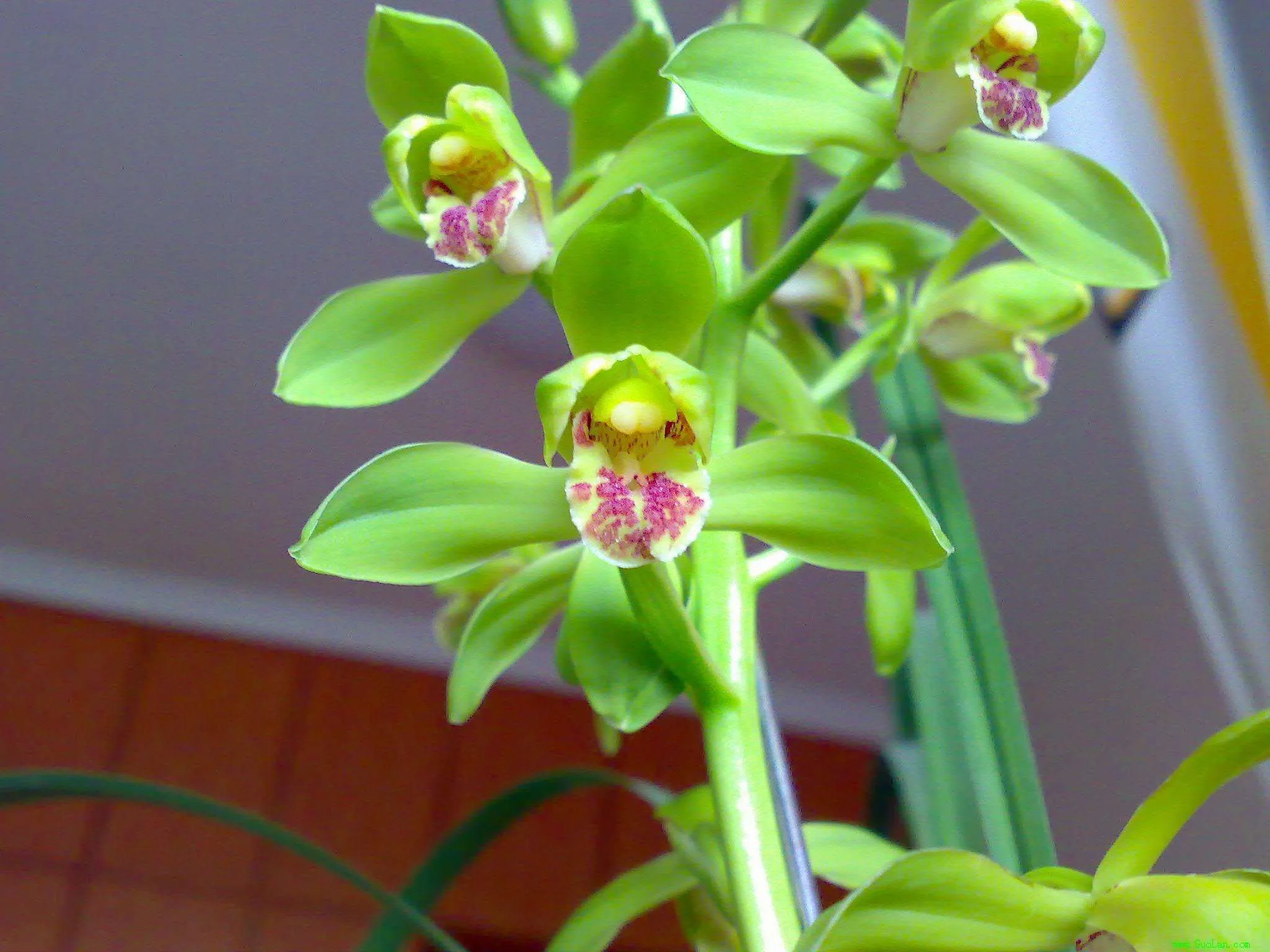
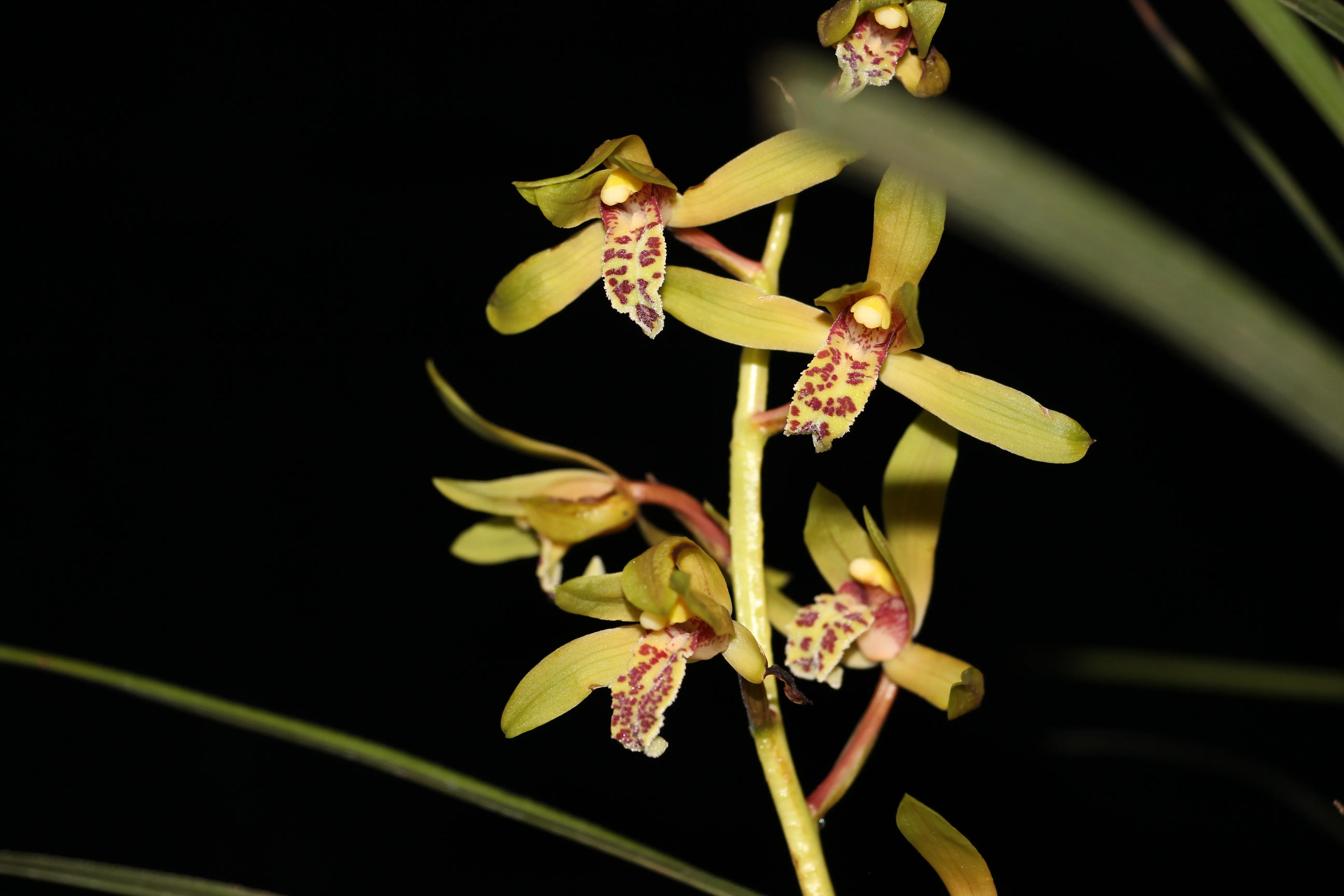
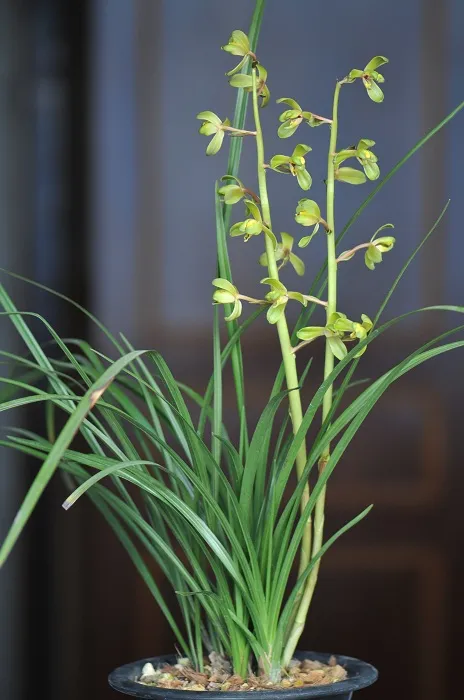
Cymbidium Orchid Quick InfoWhen to Plant Cymbidium OrchidWhen does Cymbidium Orchid Bloom & HarvestCymbidium Orchid Care in DetailCymbidium Orchid WateringCymbidium Orchid SoilCymbidium Orchid LightCymbidium Orchid TemperatureCymbidium Orchid HumidityCymbidium Orchid FertilizerCymbidium Orchid PruningCymbidium Orchid RepottingCymbidium Orchid Pest & Disease ControlCymbidium Orchid PropagationCymbidium Orchid Propagation from DivisionCymbidium Orchid Propagation from Seed
Cymbidium Orchid Quick Info
| Botanical/Scientific Name | Cymbidium |
| Common Name | Boat Orchids |
| When to Grow/Bloom/Harvest | Bloom in mid-autumn to mid-spring |
| Uses | Corsages and wedding work |
| Origin | Himalayas in Asia |
| Light Care | Bright defused light |
| Soil Care | Loamy, moist, well-draining |
| Temperature Care | 75 to 85 F |
| Humidity Care | 50-70% relative humidity |
| Watering | Every day in summer/10 days in winter |
| Pruning Care | Cut pruning stems |
| Fertilizer Care | Any balanced orchid fertilizer |
| Propagation | Back bulbs |
| Toxic | No toxic effects |
| Flower Color | Pink, green, yellow, white |
When to Plant Cymbidium Orchid

At least after a winter of nutrient storage, Cymbidium orchid still has enough nutrients to support its service basin, as long as the planting environment is reasonable and the planting material is prepared correctly. Well, the survival rate of Cymbidium orchid planted in spring is not low, but it will certainly have varying degrees of impact in the pot period. This is because the cymbidium orchid root can not absorb nutrients from the soil in time at the beginning of planting, resulting in excessive consumption of stored nutrients of the orchid plant. This will directly affect the situation of new buds in that year. It is common that the sprouting time of new buds is delayed, and the seedling of new buds in that year is not strong enough. These are caused by large nutrient consumption during pot service period. Therefore, planting Cymbidium orchid in spring is not the best season. This is the difference between Cymbidium orchid and other plants.
But autumn is different. The natural law of Cymbidium orchid is to slowly enter the convergence state. Both arboreal plants and herbaceous plants store energy for overwintering. During this period, the consumption of plants gradually slows down until winter comes, and the consumption will be less or even suspended, but its leaves will still work continuously to produce nutrients for storage through photosynthesis. After autumn, the growth of Cymbidium orchid slowly enters the dormancy period, which means that the plant consumption is less and less. After orchids are put into pots, there is enough time to take pots, because there is no need to worry about consumption, which is also the reason why Cymbidium orchid is easy to survive in autumn. So we can choose to plant Cymbidium orchid in autumn.
When does Cymbidium Orchid Bloom & Harvest
Cymbidium orchid flowers bloom between March and may. March is not the most flowering time for Cymbidium orchid, that is, the initial stage. It is still the initial stage in mid April, but it is more vigorous in the last ten days. Cymbidium orchid's flowers are in the final stage in May.Cymbidium Orchid Care in Detail

Cymbidium Orchid Watering
We water Cymbidium orchid according to the season. In the spring and autumn growing season, it is usually necessary to replenish water every five days to make the soil slightly wetter to meet the water demand in the growing season. If it is summer, the temperature is high and the water evaporates quickly naturally. It is necessary to replenish water every three or four days, and spray water frequently to improve the humidity. If it is winter, the growth basically stops under the low temperature environment. If the soil is not dry, don't water it first. In addition, we must control the amount of water for Cymbidium orchid, and ponding is strictly prohibited.- Also Read: Why Is My Orchid Stem Turning Yellow
Cymbidium Orchid Soil
For Cymbidium orchid soil, we generally use slightly acidic soil that is relatively loose and breathable, has good drainage performance and is rich in a large amount of organic matter. We can lay some sand and gravel on the gasket before putting the orchids into the basin and adding appropriate soil. If we add 1 / 3 coarse-grained river sand and perlite to Cymbidium orchid soil, it is more in line with its growth habit.Cymbidium Orchid Light
Cymbidium orchid is a light loving plant. It needs sunlight even in summer. Of course, Cymbidium orchid receives the light leaked from the gaps of leaves in summer, which is different from the direct sunlight. In summer and autumn, we can put a piece of green cloth on the cymbidium flower pot and cut some holes irregularly, the size of half a fist. In this way, the sunlight leaked from the hole can bask in the cymbidium orchid leaves, and the light receiving time at each position of the leaves will not be too long, and the leaves will not be damaged even in summer. In other seasons, we can take full-time photos. Of course, it is very good for us to bask in the sun for Cymbidium orchid in summer morning.- Read More: Why Are My Orchid Leaves Turning Yellow
Cymbidium Orchid Temperature
From March to June every year, we can put Cymbidium orchid in the sun for 5 to 6 hours (from 6 a.m. to 12 noon), which can promote rooting and seedling growth. If it is placed on the balcony facing the southeast, it can accept natural sunshine. When the temperature exceeds 36 ℃, pay attention to avoid noon.Cymbidium Orchid Humidity
Cymbidium Orchid growth requires higher air humidity, relative humidity 80%~90%, and low air humidity is not conducive to growth and development. We can use Cymbidium spray water to set up pools and water basins to increase air humidity at Cymbidium Orchid cultivation sites. However, Cymbidium Orchid cultivation materials can not accumulate water.
Cymbidium Orchid Fertilizer
Cymbidium orchid needs more fertility because it not only has large leaves, but also has more flowers. Therefore, we can't plant Cymbidium orchid without fertilization. In addition to the lasting fertility of plant materials, we can't reduce fertilization in later management, otherwise there will be different years. We can apply fertilizer once after Cymbidium orchid flowers in spring, bury it under the soil at the basin wall, and apply it again in the same amount in autumn (September). Spray 800 times of foliar fertilizer (potassium dihydrogen phosphate) three times in the first half of the year, and spray 1000 times of foliar fertilizer three times in autumn.Cymbidium Orchid Pruning
We can cut the cymbidium orchid flower branches from the bottom, which not only does not affect the beauty, but also ensures that no more nutrients are consumed. In addition, Cymbidium orchid likes wet and sunny, and the appropriate temperature is between 10 ℃ and 28 ℃. After cutting the inflorescences, we move Cymbidium orchid to a well ventilated windowsill, which can promote its better growth. After placing it for about a week, Then move the flowers outdoors, step by step. Do not suddenly move from indoors to outdoors, because the sudden changes of environment and light affect their growth.Cymbidium Orchid Repotting
If we find that Cymbidium orchid is scorched at the time, excluding the factors of too much fertilizer and water, it is likely that the orchid roots grow to the bottom of the basin and touch the wall rigidly, which will be reflected on the leaf surface. At this time, Cymbidium orchid should change the basin in time. The cymbidium orchid is first potted and divided into 3 ~ 5 seedlings in a cluster, and then planted in the basin again. After pouring the channel water, it is placed in a cool and ventilated place for 7 ~ 10 days, and then gradually increase the light. After one month, it can be placed on the balcony for cultivation and appreciation.Cymbidium Orchid Pest & Disease Control
We should pay attention to the prevention and control of common diseases such as black spot and anthrax of Cymbidium orchid in rainy season. We can use methyl tobramol and carbendazim alternately before or after rainy season, and spray the leaf surface once every 7 ~ 10 days.Cymbidium Orchid Propagation

Cymbidium Orchid Propagation from Division
Cymbidium orchid propagation from division can be carried out in spring and autumn. Generally, it is divided every three years. All plants with strong growth and dense pseudobulbs can be divided into plants. After dividing, at least 5 connected pseudobulbs should be kept in each cluster. Reduce irrigation before branching, so that the basin soil is lower than. When we put the basin on Cymbidium orchid, we can first cover the basin bottom hole with broken tiles, then lay coarse stones, accounting for 1 / 5 ~ 1 / 4 of the basin depth, put coarse-grained soil and a small amount of fine soil, and then plant with sandy loam rich in humus. The planting depth is to just bury the cymbidium orchid pseudobulb into the soil, leave 2cm along the edge of the basin, spread emerald grass or fine stones on it, and finally pour water into the shade for 10 ~ 15 days to keep the soil moist, gradually reduce watering and carry out normal maintenance.Cymbidium Orchid Propagation from Seed
Cymbidium orchid seed is very fine, there is only one incomplete embryo in the seed, and the germination ability is very low. In addition, the seed coat is not easy to absorb water, so it can not germinate when sown by conventional methods. Therefore, we need to use artificial culture medium to supply nutrients to germinate. When sowing Cymbidium orchid, we'd better choose the fruit that hasn't cracked. After the surface is sterilized with 75% alcohol, take out the seed, soak it with 10% sodium hypochlorite for 5 ~ 10 minutes, take it out and wash it with sterile water for 3 times, then sow it in the culture bottle containing the culture medium, and then place it in the dark culture room, keep the temperature at about 25 ℃, and move it to the light after germination to form protocorms. It takes half a year to one year from the sowing to transplantation of Cymbidium orchid.Latest Updated
- Why Is My Orchid Stem Turning Yellow - How to Treat
- How to Grow and Care for Cymbidium Orchid (Boat Orchids)
- Why Do My Hibiscus Leaves Turn Yellow - Should I Cut Off Them
- Why Are My Orchid Leaves Turning Yellow - Common Causes & Fixs
- Why Are My Tomato Leaves Turning Yellow - 7 Reasons & Solutions
- 12 Amazing Peace Lily Benefits to Keep Your Garden Fresh!
- Asian Virginsbower Growing & Caring Guide
- How to Grow and Care for Ponytail Palm (Beaucarnea Recurvata)
- How Much Light Does Ponytail Palm Need Indoors?
- Overwatered Ponytail Palm - Signs & How to Save It
Popular Articles
- Winter maintenance of Antirrhinum Majus
- How to Grow Terminalia Mantaly Tree
- How to Grow and Care for Crossostephium Chinense
- How to grow Antirrhinum Majus in spring
- Peristeria Elata (Dove Orchid) Profile: Info & Care Guide
- Underwatered Snake Plant (Sansevieria Trifasciata) - Signs And How To Fix
- How to Care for Brazilian Jasmine Plant (Mandevilla Sanderi)
- Rosa Chinensis (China Rose): Plant Growing & Care Tips
- How to Grow & Care for Graptopetalum Purple Delight in Summer
- How to Care for Baby Sun Rose (Aptenia Cordifolia)